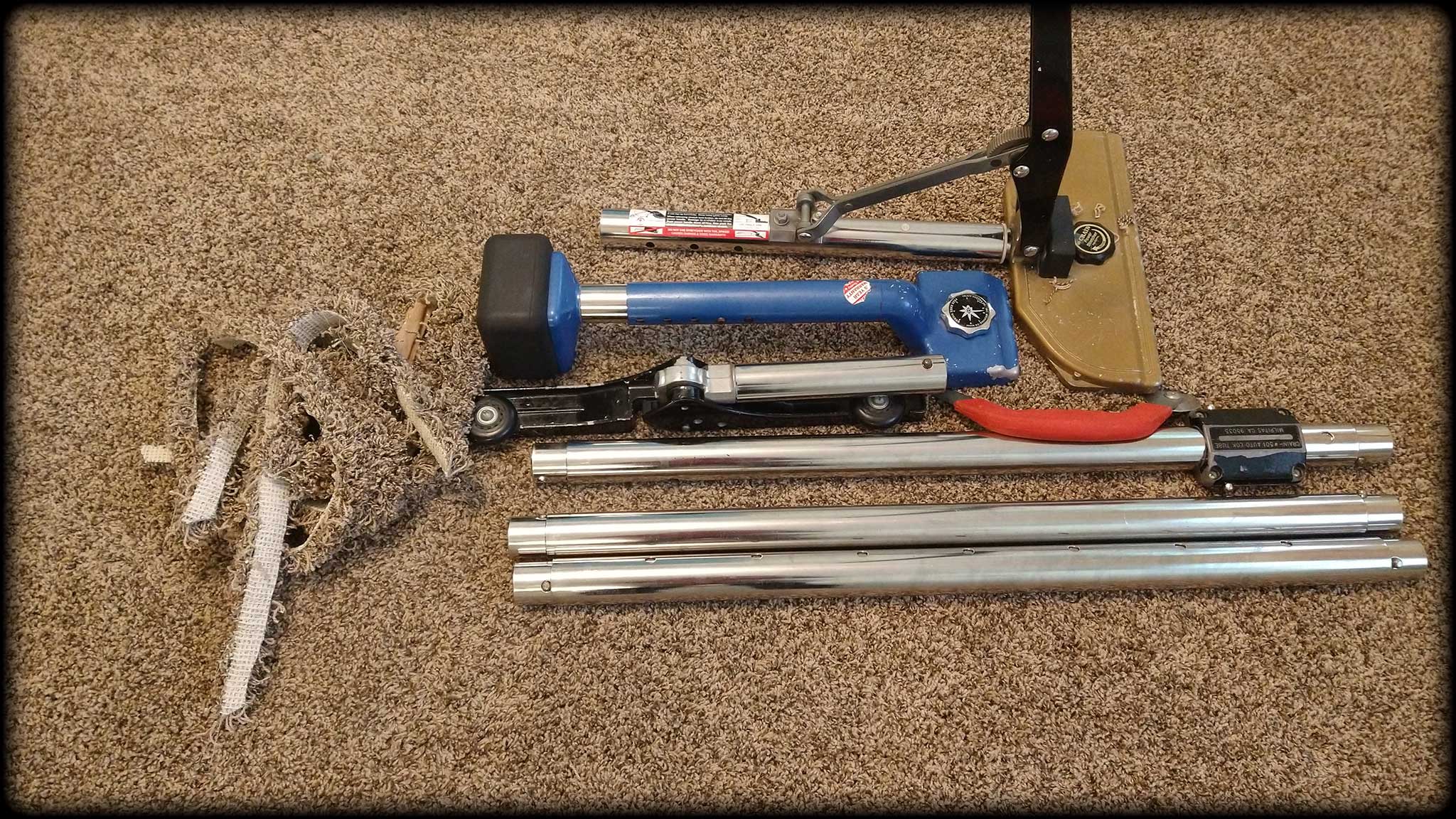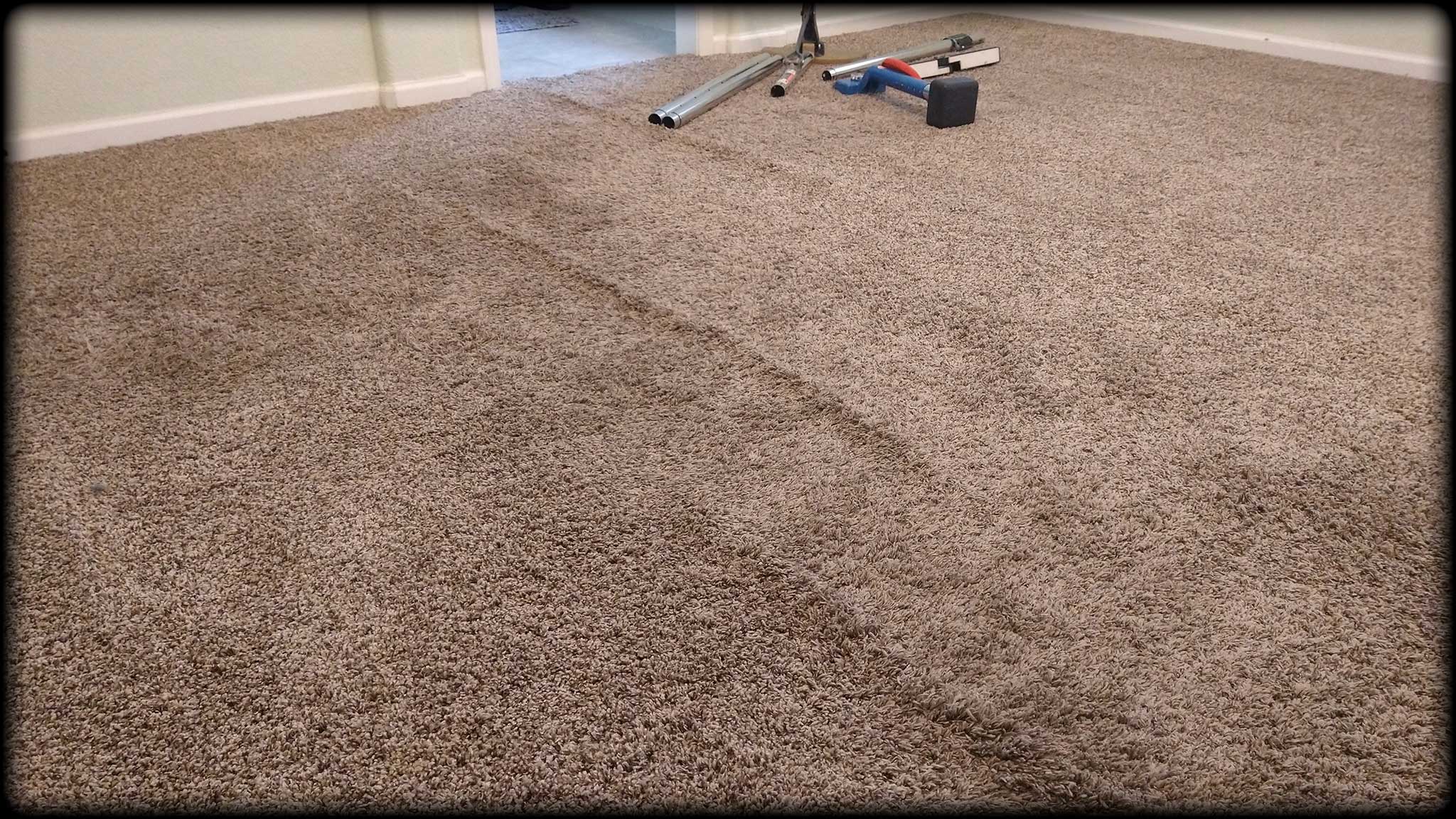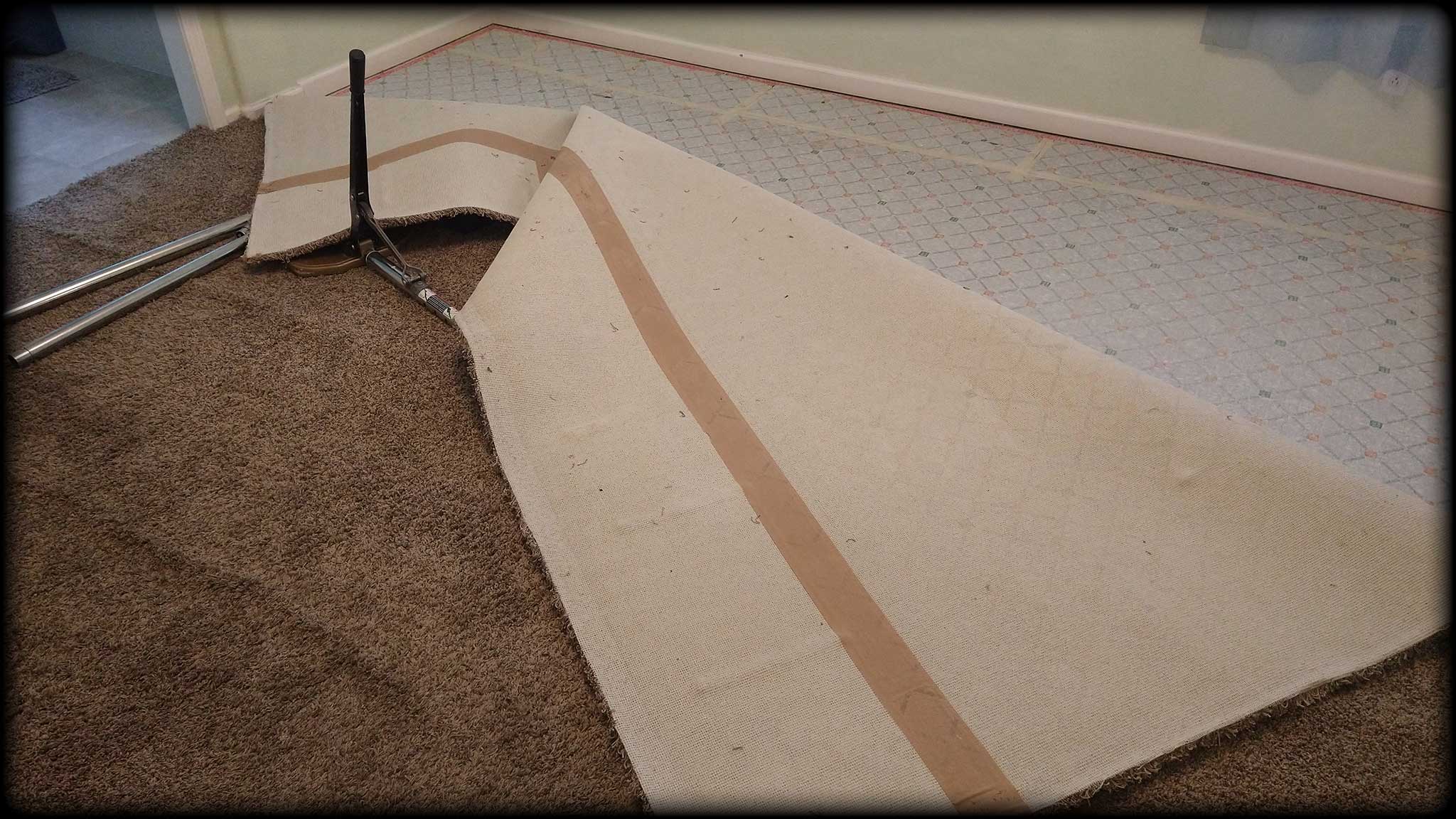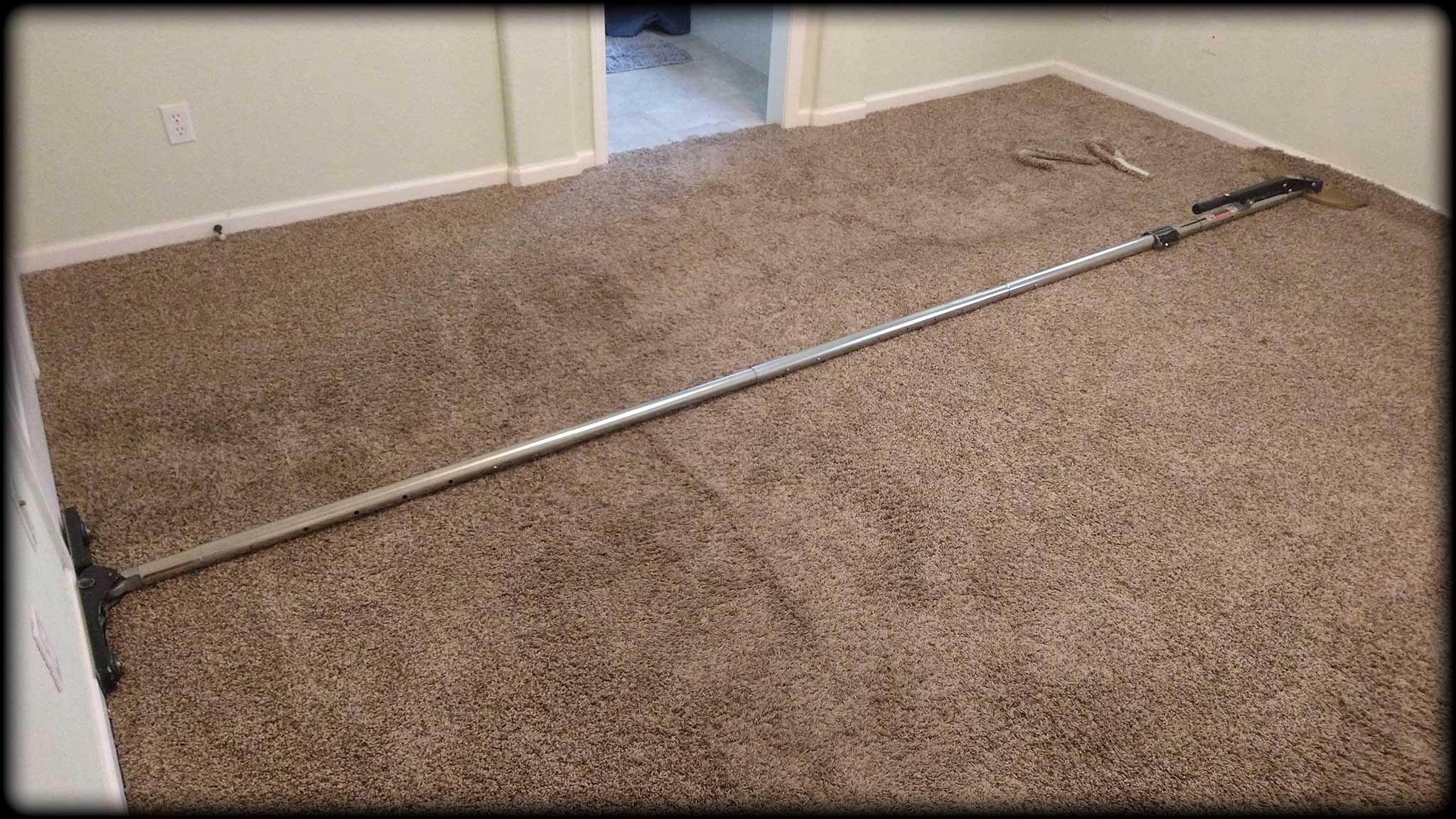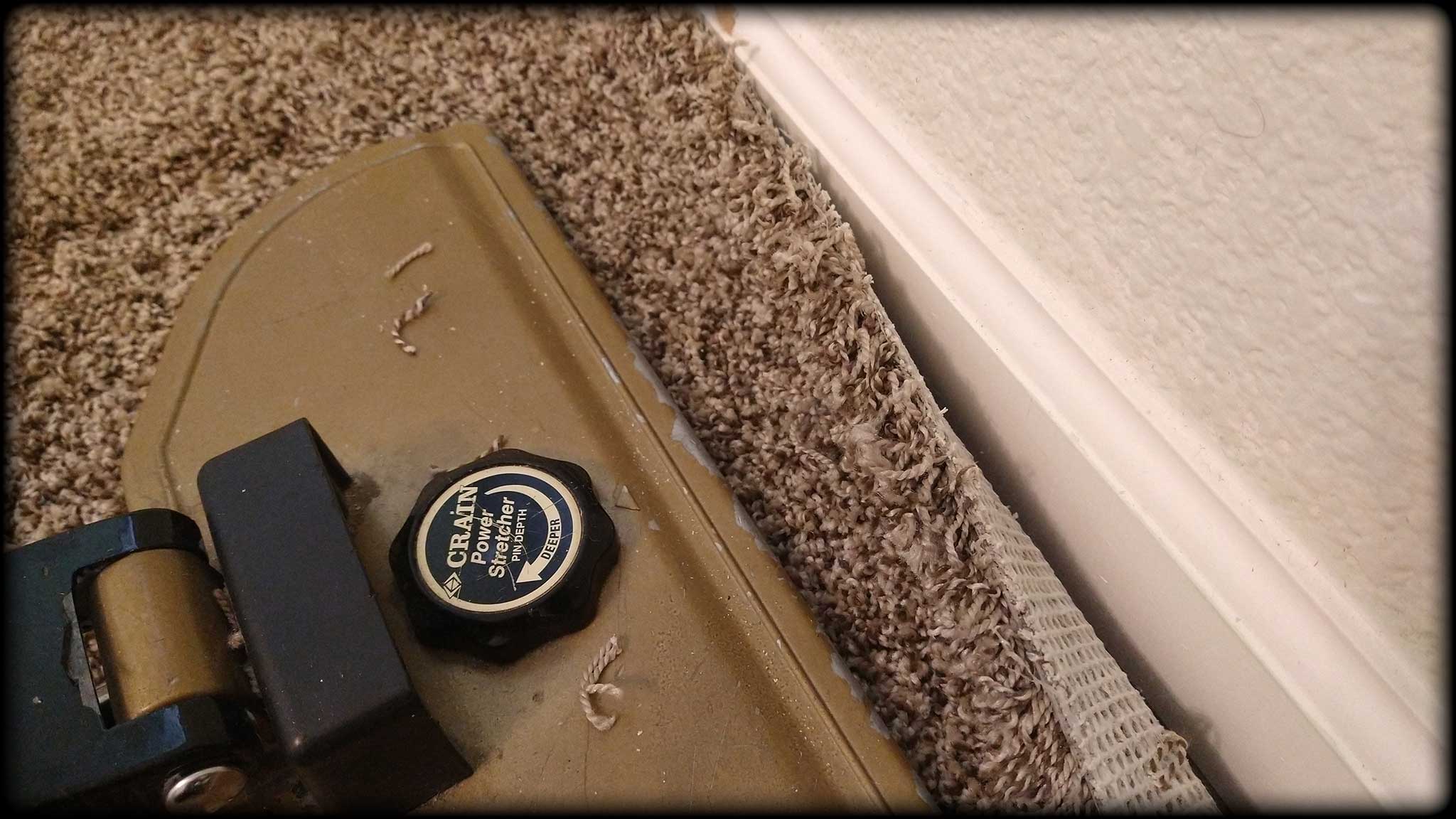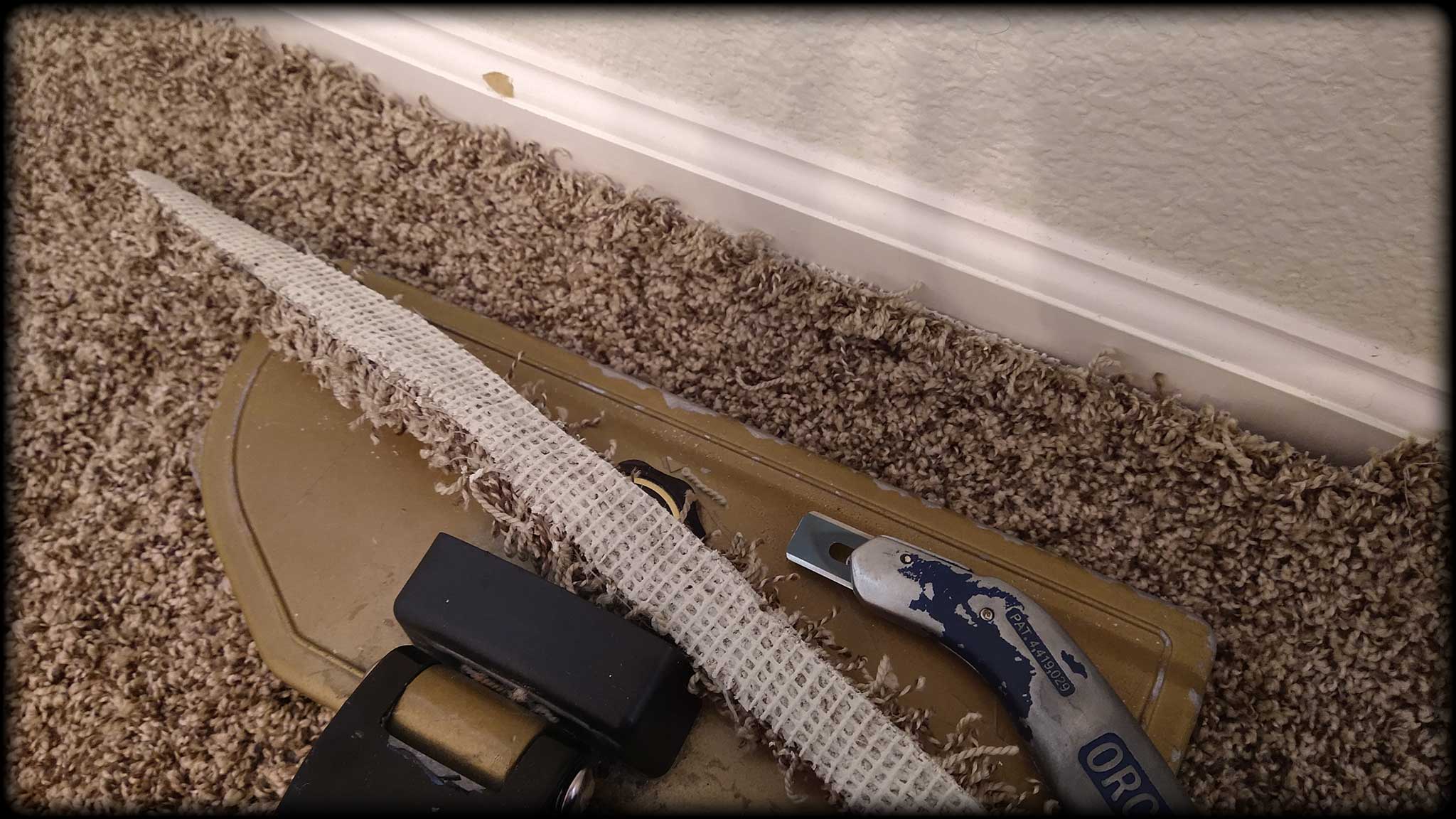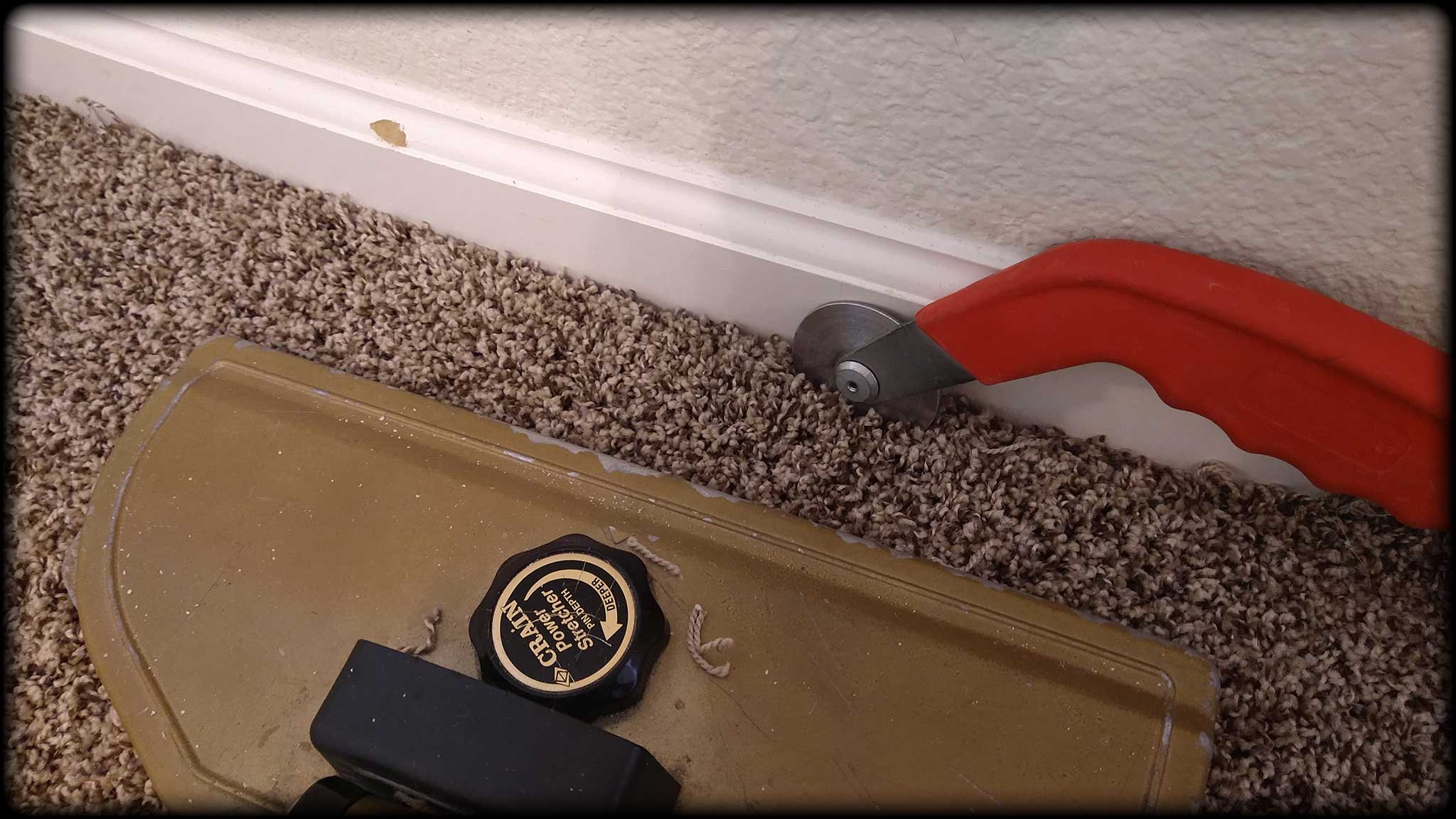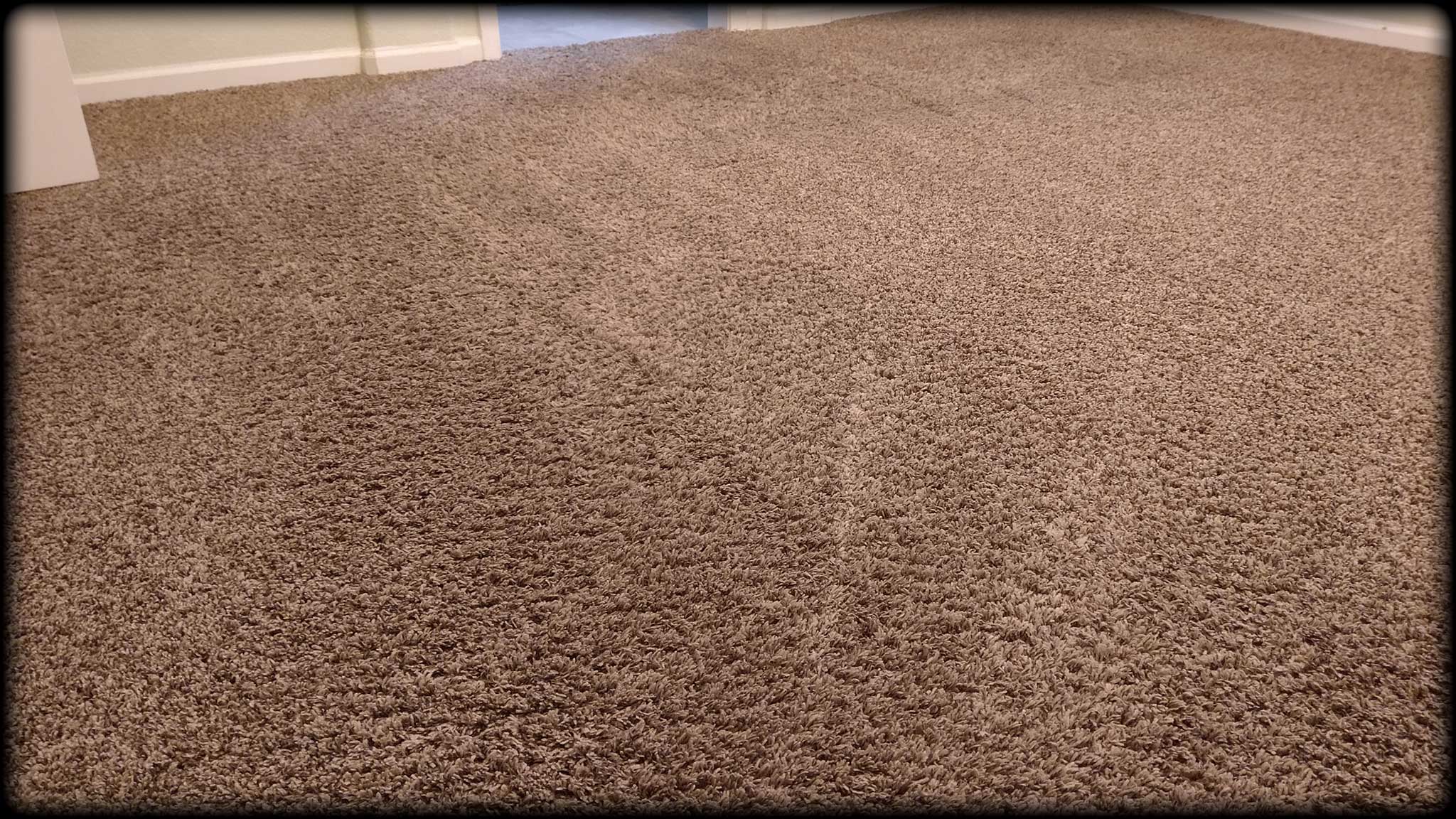How Carpet Stretching Works - The Full Process
If you own a home nowadays and either bought a newer home with carpet
or have recently had carpet installed
then you may have already experienced a problem with your carpet developing wrinkles.
At first, this might be very alarming if you've never experienced carpet buckling
or waves in the carpet but it's actually quite normal
with carpet now and it can be fairly simple to fix.
On this page, I will break down the steps taken when re-stretching carpet,
you can rent tools to try and do it yourself
or use this page to understand the process when hiring a professional.
